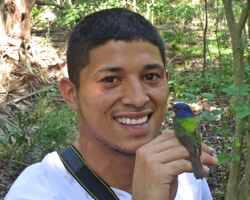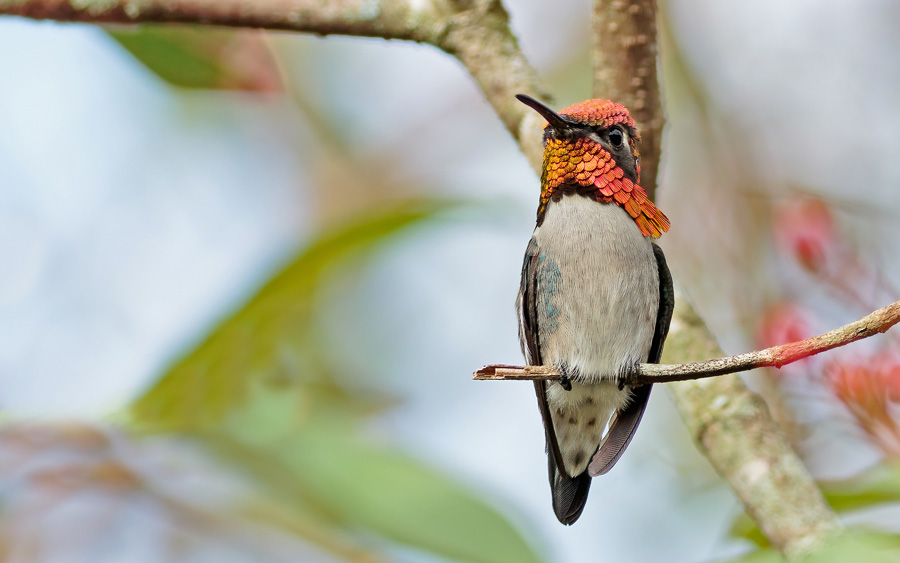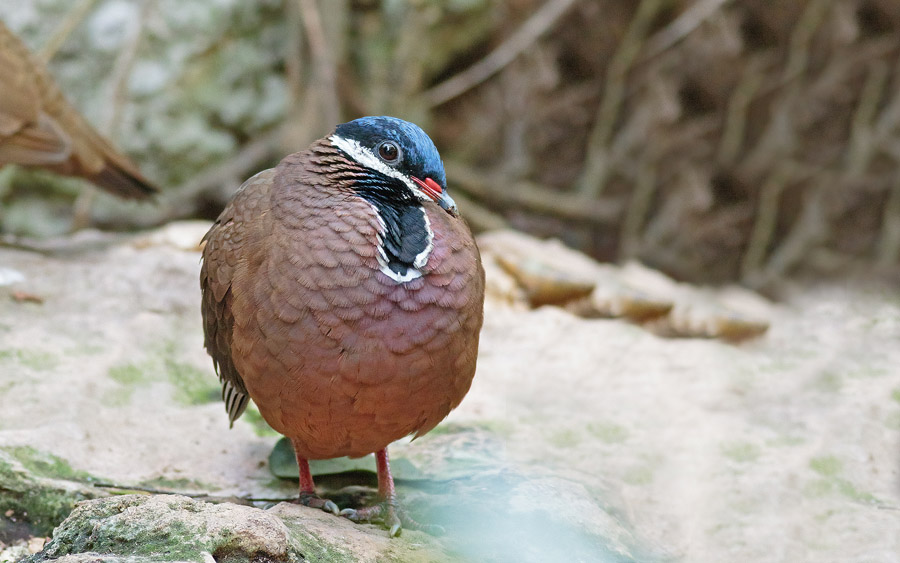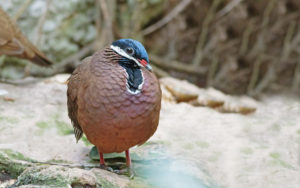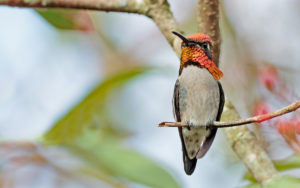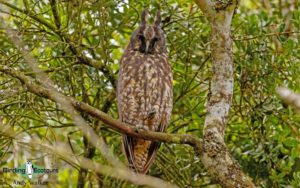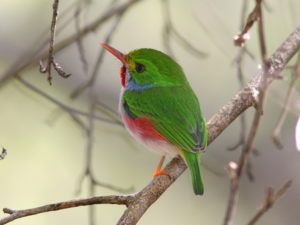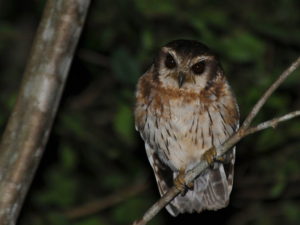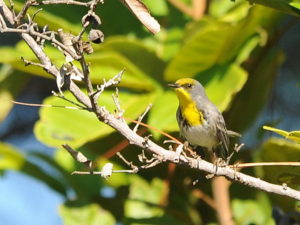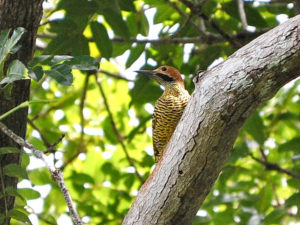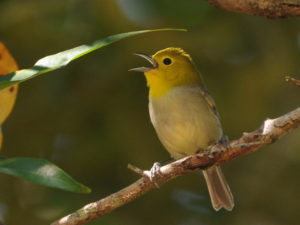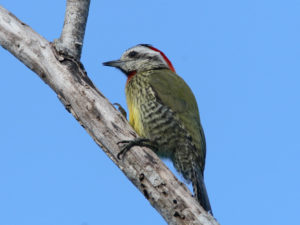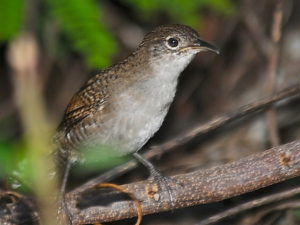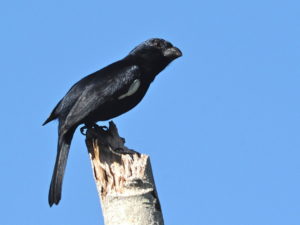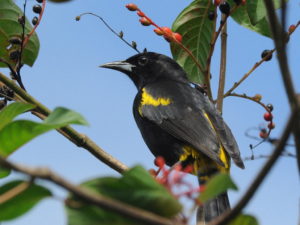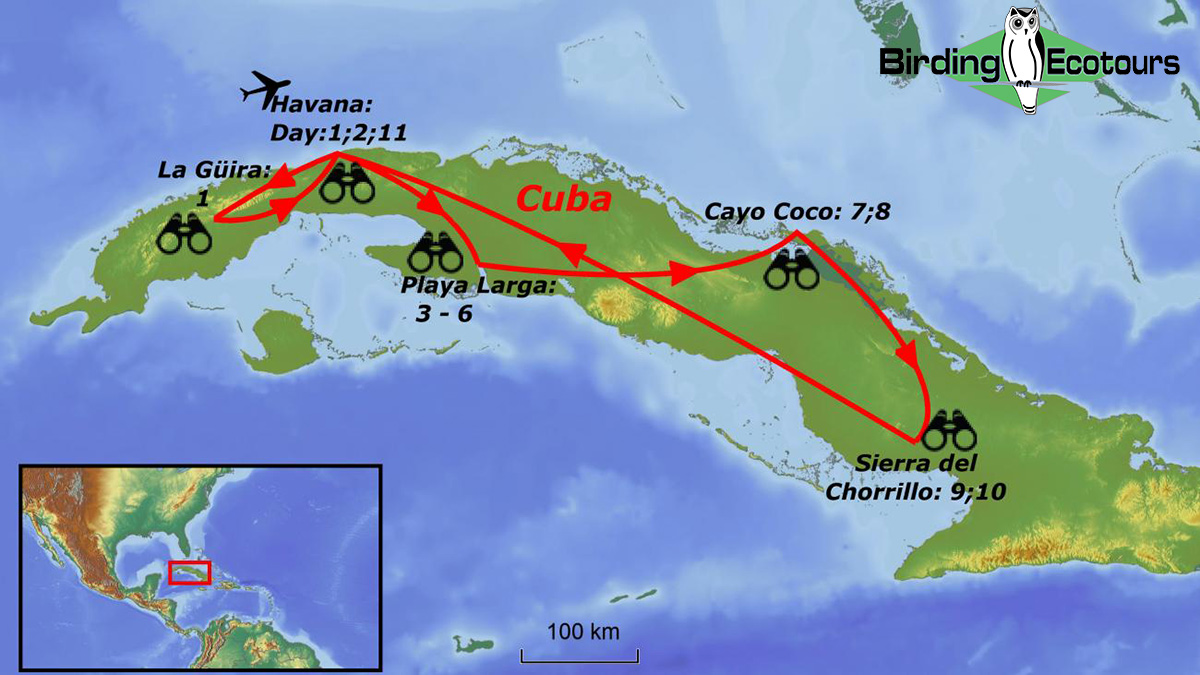Birding Tour Cuba: Endemics and Culture in Paradise
Birding Tour Cuba: Endemics and Culture in Paradise
March 2027
The smallest bird on the planet, Bee Hummingbird, a myriad Cuban Todies and Cuban Trogons in every patch of scrub, and a host of other endemics and regional specials – all on an idyllic island paradise that is full of history and culture! Combining this 12-day Cuba birding tour with our Jamaica birdwatching tour provides opportunities to see almost 60 single-island endemics spread across two islands: Cuba, the largest of the Greater Antilles, and Jamaica, the smallest of the main islands in the group. Then you can also combine these birding tours with our Dominican Republic birding tour to see an endemic family (Palmchat) and a further suite of endemics of another large (second only to Cuba in size) Caribbean Island, Hispaniola. In addition, on this Cuba birding holiday, we will have chances to find a number of multi-island endemics and regional specials, some of which may, in the future, be upgraded in their taxonomic status.
Bee Hummingbird; the world’s smallest bird species (photo Daniel Orozco)!
On this Cuban birding tour we aim to find all of Cuba’s realistic avian endemics, a host of wider Caribbean endemics, and finally a bunch of North American migrants (like a stack of brightly colored wood warblers), while also having time to snorkel during the heat of the day, see the amazing architecture, not only of Cuba’s capital, but also of Camagüey and other towns, and of course to enjoy the old American cars and the general atmosphere of this tropical paradise. It’s quite an easy tour, in which we find the birds we need without too much trouble (except for a couple of them, such as the quail-doves, which can require persistence).
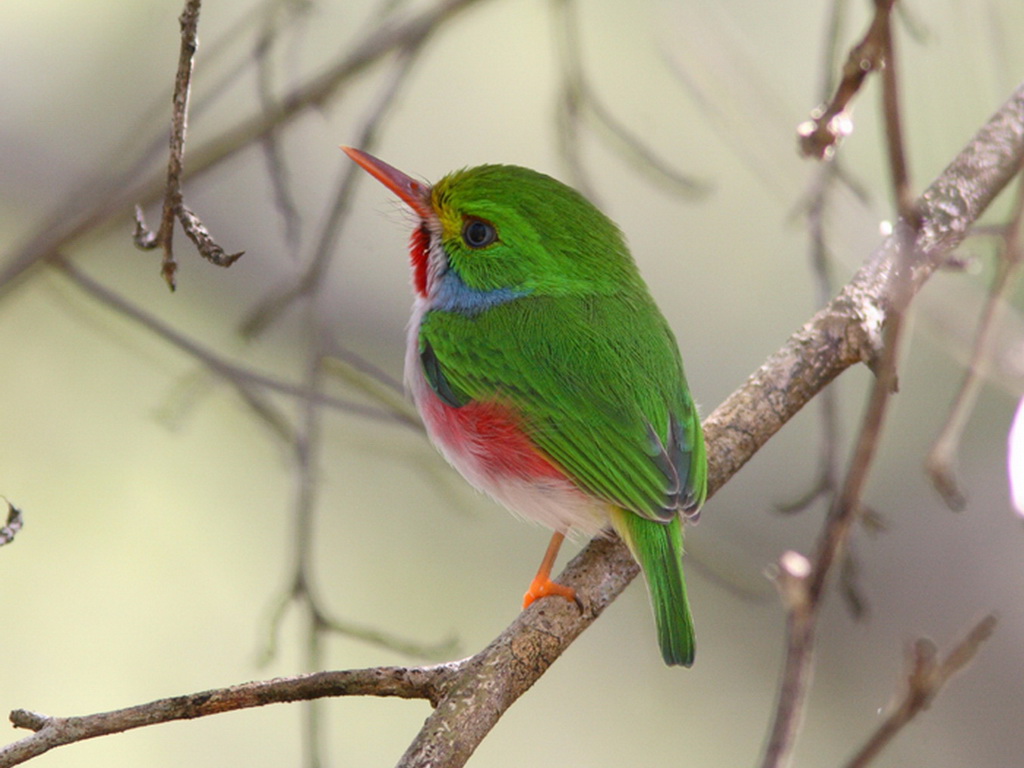
We arrive in the charismatic city of Havana and overnight here, getting a great taste of Cuban architecture, culture, atmosphere – and getting acquainted with some of the more common birds of the West Indies. We then head to the picturesquely mountainous and very bird-rich La Güira National Park. Here, we search the caves where Che Guevara hid during the Cuban missile crisis, looking for our first of many endemics, Cuban Solitaire.
With much anticipation, we then proceed to Cuba’s famous Zapata Swamp, one of the richest sites throughout the West Indies, which continues across much of the western two thirds of this island, which is widely regarded as the last bastion of communism in the world but is now gradually becoming slightly more liberalized. We will have good chances of finding all of Cuba’s endemics, except for the near-mythical Zapata Rail which requires a trip of near-expedition proportions for any chance of seeing it, and the rare Cuban Kite in the far east of the island.
We then proceed to a chain of islands connected to the mainland by a 17-mile/27-kilometer-long causeway, seeking Bahama Mockingbird, some Cuban endemics reaching the western limit of their range here, Mangrove Cuckoo, and more. Eventually we clean up on the birding at Sierra de Najasa and then drive back to Havana where we have a bit of time to enjoy the city before your international flights depart the next day.
This trip can easily be combined with our The Best of Complete Jamaica birding tour which runs before this Cuba tour, for a very comprehensive birding experience in the Caribbean.
Itinerary (12 days/11 nights)
Day 1. Arrival in Cuba and sightseeing in Havana
This is a travel day and you can arrive any time. You’ll be met at the airport and transferred to your hotel in the historic old town part of Havana. You can explore on foot, either on your own or with our guide, whatever you prefer.
Overnight: B&B (Casa Particular) in the Havana area
Day 2. Transfer to La Güira National Park
Today we transfer the 80 miles/129 kilometers to La Güira National Park at the west end of the island. This highland region is still well-forested and is consequently excellent for endemics. However, our principal targets will be the endemic Cuban Solitaire and the near-endemic Olive-capped Warbler, both of which are usually readily found. Finally, we will check a different area for the now very localized Cuban Grassquit. Although still common in the eastern third of the island, finding one in Cuba has become rather difficult in recent years as many have been trapped by cage bird enthusiasts.
Overnight: Hotel Islazul Mirador, La Güira, or similar
Day 3. Transfer to Zapata Swamp
After much anticipation, we will make the long (at least half a day) transfer to Playa Larga in the Bay of Pigs for a four-night stay on the Zapata Peninsula (encompassing the Zapata Swamp), one of the richest areas for birds in the entire West Indies region, with over 200 species having been recorded here. We should soon be seeing some of Cuba’s best birds. Cuban Blackbird, Cuban Oriole (recently elevated to full species status), Cuban Emerald, Cuban Crow and Tawny-shouldered Blackbird are usually easy to find but kindly read on for some of the even more exciting birds!
Overnight: B&B (Casa Particular), Zapata Peninsula
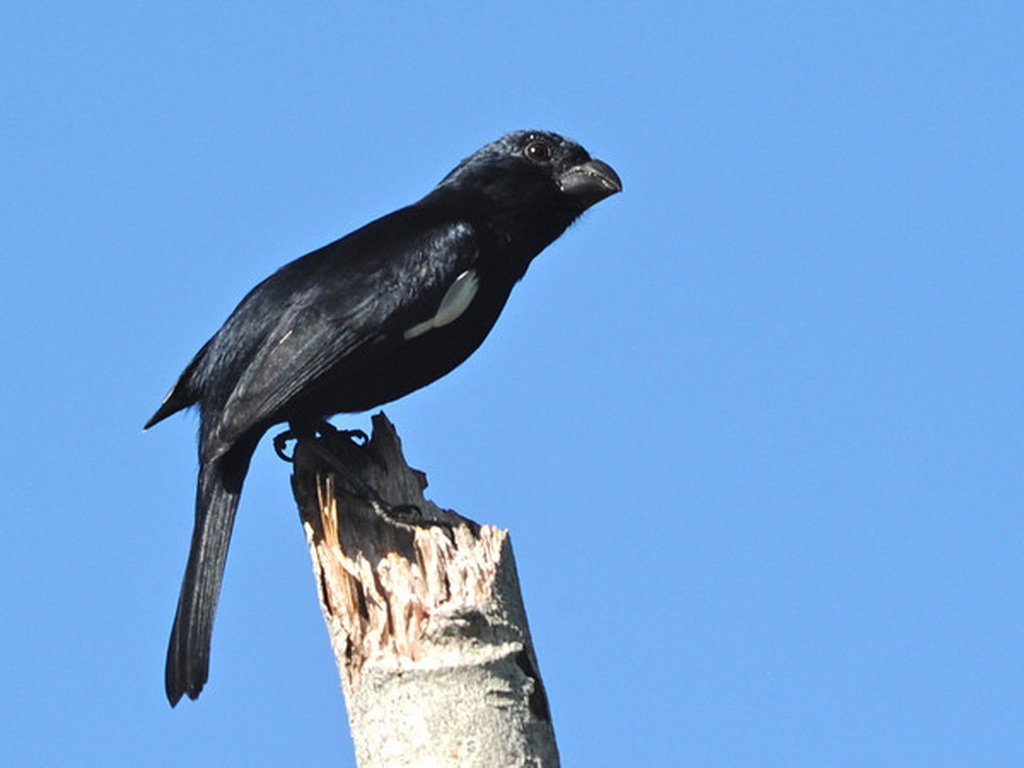
Days 4 – 6. Birding the Zapata Peninsula
Some of our main targets in this area will be the quail-doves, of which four species occur on the island. The spectacular Blue-headed Quail-Dove, which belongs to a monotypic genus, is the most difficult, while Ruddy Quail-Dove is widespread throughout much of the neotropics, but Key West Quail-Dove is restricted to the Greater Antilles and the Florida Keys, and the globally threatened Grey-fronted Quail-Dove is confined to Cuba. Time and patience are always prerequisites in the quest for these birds. Woodpeckers are another feature of the region: Yellow-bellied Sapsucker is a common winter migrant, while the regional endemic West Indian Woodpecker and the Cuban endemic Cuban Green Woodpecker are both reasonably common residents. Most prized, however, is the rare and declining Cuban endemic Fernandina’s Flicker, which is known from several sites in the area. The Bermejas Forest Reserve will be one of our most frequently visited sites: Cuban Amazon (also known as Rose-throated or Cuban Parrot), Cuban Parakeet, and Bare-legged Owl are all regular there, in addition to the quail-doves and woodpeckers. We will search mixed flocks for the endemic Yellow-headed Warbler, Cuban Vireo, and Cuban Bullfinch, and be ever alert for the short, rattling call of a Cuban Tody. The beautiful Cuban Trogon (Cuba’s national bird) and the rather dowdier but still impressive Great Lizard Cuckoo are regular sights and sounds. We will keep a sharp watch for any signs of panic among the small birds, which may indicate the presence of the rare endemic Gundlach’s Hawk.
Blue-headed Quail-Dove will be targeted on the Zapata Peninsula (photo Daniel Orozco).
One morning we will make an earlier-than-usual start for a locality within the famous Zapata Swamp. The open woodland around the swamp will afford chances for Northern and Louisiana Waterthrushes as well as three island endemics, Cuban Pygmy Owl, Zapata Sparrow, and Red-shouldered Blackbird. Our principal target, however, will be the extremely localized Zapata Wren, which is currently being seen at a site that does not require getting wet feet (unlike in the 1990s). This place is also home to Spotted and King Rails, Sora, and a range of common marsh birds, including various herons, Belted Kingfisher and Northern Harrier, but chances of the ultra-rare and highly secretive Zapata Rail are effectively nil.
Another species synonymous with Cuba is the smallest bird in the world, Bee Hummingbird. We will visit several of its known haunts during our time in Zapata, affording us fine chances to catch up with one of Cuba’s most desired bird species. We will also make a couple of early-evening excursions, one to find the endemic Cuban Nightjar (now classified as distinct from the form in Hispaniola), while, on the other hand, a pair of Stygian Owls is a regular feature of our hotel’s grounds.
Each day will follow a similar pattern: After an early breakfast we will head to an adjacent area and bird until late morning before returning to the hotel for lunch and a short siesta, thereafter returning to the field in the midafternoon. During the mid-day rests you can either sleep, lounge on the beach at the hotel, or we can take you to some of the best snorkeling sites on earth (the reefs are extremely easily accessible without a boat). We can also make a visit to the museum at Playa Giron.
Overnight: B&B (Casa Particular), Zapata Peninsula
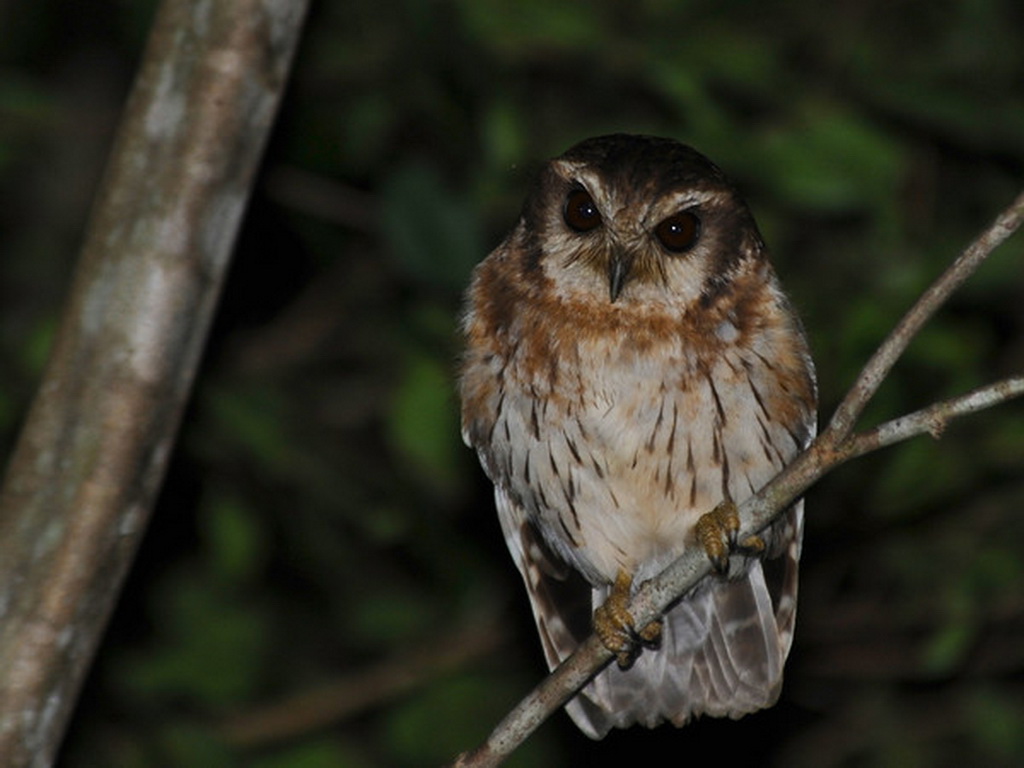
Days 7 – 9. Transfer to Cayo Coco, birding Najasa en route
We make the long (250 miles/405 kilometers) transfer to Cayo Coco. On the way, we will visit the Sierra de Najasa, where we will search for a range of highly specialized species, including the Near-threatened (IUCN) Plain Pigeon as well as both Cuban Crow and Cuban Palm Crow (facilitating an appreciation of the differences between these two all-black species). Also here is Eastern Meadowlark as well as another globally threatened bird, now endemic to Cuba, Giant Kingbird. Furthermore we will also have additional chances for Cuban Parakeet, Fernandina’s Flicker, Gundlach’s Hawk, and yet more wintering North American warblers. We can also check a nearby lake for West Indian Whistling Duck.
We then proceed to Cayo Coco. The last 17 miles/27 kilometers is on an amazing causeway that links Cayo Coco with “mainland” Cuba. Just before doing this final little stretch, we often look for Mangrove Cuckoo at our stakeout. Then we’ll proceed north to the island of Cayo Coco, where we will spend two paradisical nights.
Before the causeway was built, Cayo Coco was a wilderness known only to fishermen (including Ernest Hemingway). Nowadays the region has been extensively developed for tourism, but especially during migration this is an exciting place to be, with a long list of rarities having been recorded. However, we will be mainly concentrating on finding the breeding specials: an endemic subspecies of Thick-billed Vireo is found only here, while the attractive Cuban Gnatcatcher and Oriente Warbler are close to the westernmost limits of their ranges, and Mangrove Cuckoo and Bahama Mockingbird are, in Cuba, largely or wholly restricted to this area. Should we have missed it earlier, there is another chance for Key West Quail-Dove, while a different subspecies of Zapata Sparrow is much easier to see than in Zapata. Numbers of terns and gulls can be seen offshore, and the causeway is the best place in the West Indies to see Red-breasted Merganser as well as being the regular haunt of a large flock of American Flamingos and many waders and herons.
Overnight: All-inclusive hotel in Cayo Coco
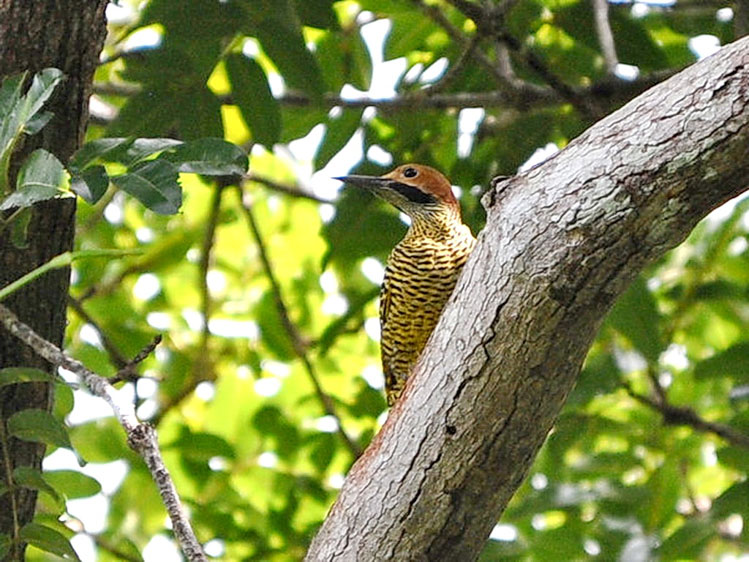
Day 10. Transfer to Camagüey, birding en route, city tour
Transfer (125 miles/200 kilometers) to Camagüey, the third-largest (and oldest) city in Cuba. We will bird on the way, and after arriving in the city we will make the short trip to the city’s cathedral to search for the endemic breeder, Cuban Martin, should we not have already encountered it in Zapata. This species, which is very similar to Purple Martin (which migrates through Cuba), is unknown anywhere else in the world but is absent from the island between autumn and late January. We’ll also do a walking tour of the city and then have lunch there. Even the most hardened birder usually likes to spend an odd hour or two looking at other interests in Cuba, especially on a tour like this, in which we typically find all the avian endemics, regional specials, and migrants anyway (subject to some amount of luck, of course!).
In the afternoon we’ll drive to our accommodation to arrive in time for a short birding walk.
Overnight: Finca La Belén, Sierra del Chorrillo
Day 11. Transfer to Havana
Today, we’ll have a long journey back to Havana, perhaps with the odd stop here and there for broadside birding.
Overnight: B&B (Casa Particular) in the Havana area
Day 12. Enjoying Havana and flight home or onwards to Dominican Republic
The previous afternoon and today, you have time to enjoy Havana on foot before flying home.
Please note that the itinerary cannot be guaranteed as it is only a rough guide and can be changed (usually slightly) due to factors such as availability of accommodation, updated information on the state of accommodation, roads, or birding sites, the discretion of the guides, and other factors. In addition, we sometimes have to use a different guide from the one advertised due to tour scheduling or other factors.
Download ItineraryPassports and visa
Your passport must be valid for at least six months beyond departure. A tourist visa is compulsory for entry into Cuba. This is valid for 30 days from the day of arrival. Clients staying for a longer duration may extend these locally via the Cuban embassy. If you are traveling to another country from Cuba and then returning, you will need another tourist visa in order to re-enter the country. Please ensure you have your tourist visa correctly completed before check-in at the airport, as it will be requested with your ticket and passport at check-in. While you are in Cuba you must retain the tear-off part of the visa given to you by customs, as it will be required on departure.
Tourist card
A tourist card needs to be completed when visiting Cuba.
Health requirements
There are no compulsory vaccinations required for Cuba, but the following are sometimes recommended: Tetanus, Polio, Hepatitis A, and Typhoid. Please check with your doctor for the most up-to-date information. We strongly advise you to read the Center for Disease Control advice on Cuba, at https://wwwnc.cdc.gov/travel/destinations/traveler/none/cuba.
Your health while in Cuba
Cuba’s health facilities are good, and some of the larger hotels have their own doctor on site. International clinics can be found in all the main resorts as well as in Havana, Trinidad, Santiago de Cuba, and Cienfuegos. Mosquitoes can be a problem. Use plenty of repellent and keep covered in the evenings, especially at sundown. Many medicines are not commonly available (e.g. Imodium, TCP, Piriton, sanitary protection) and we strongly recommend you take your own supply. Although tab water is considered safe we recommend bottled water, which is widely available. Should you have to visit a doctor in Cuba, ensure you keep receipts for doctors’ fees or medicine paid for in Cuba, as these will be required for any insurance claim on your return.
Currency and credit cards
There are two currencies in circulation in Cuba: the peso (CUP), which you will not use, and the Cuban Convertible Peso (CUC). The value of the CUC is on a par with the US Dollar rate of exchange. CUCs are of no use outside of Cuba and must be changed before leaving the country. Visitors will be given the CUC when they exchange money on arrival in Cuba. Take cash in British Pounds (GBP) or Euros (EUR), which then can be exchanged locally for the convertible peso on arrival in Cuba – do NOT take US dollars because a premium of 11% is charged to exchange these! Damaged or defaced notes are often refused.
Cash can be changed in the main hotels and also in exchange houses called CADECA (Casa de Cambio) across the country. Please note that Maestro and Solo are not widely accepted in Cuba.
In these days with an increasing number of credit cards with individual names it is very important to check that your card has not been issued by an American bank; the parent company may well be of US origin. Non-American-issued credit cards are acceptable.
Please note: Some hotels/restaurants will charge a 3% credit card surcharge.
National Bank regulations apply to the import and export of foreign currency. It is prohibited to import or export local Cuban currency.
Exchange offices and duty-free shops overseas are not familiar with Scottish or Ulster banknotes and therefore do not always accept them.
Cash can be easily drawn against Visa debit or credit cards at the Banco Financiero. They are open from 8.30 a.m. to 3.30 p.m., but note that your transaction can only be made when your home country bank is open!
ATM machines are available in Havana and other major cities – and they are starting to appear in smaller towns (such as Viñales) as well. There can be long queues at times, especially in Havana.
Personal security
Cuba is on the whole very safe. However, as at home take care and do not flaunt expensive possessions or jewelry in a public place. Large amounts of cash should always be left in the safety box at the hotel.
Electricity
Most of the sockets in the hotels are of the American two-pin, flat type (ITA Type A), although more modern hotels have the round-pin (European) variety (ITA Type C). The normal voltage is 110 V, although some of the more modern hotels have 220 V.
Local time
Cuba is GMT -5.
Post and communications
Post can be very unreliable and slow, so it is rare for a postcard to reach home before you do, or at all! Some hotels now offer Internet access at a charge, and connection may be slow. International telephone calls are very expensive, and we therefore recommend you purchase phone cards to call internationally from pay phones. Text messages/SMSs from your own cell phone (which you need to make sure is on international roaming before leaving your country) are inexpensive, and we recommend this in the unlikely event that you need to contact family back home (or vice versa).
Tipping
This is a much-appreciated source of income. Plenty of small notes and coins are advisable for tipping purposes to porters at hotels and airports, guides, and drivers.
Food
The most popular food in Cuba is their traditional pork, chicken, and rice dishes. In suburban areas the variety is limited and more traditional Cuban food is offered. In all-inclusive hotels there is a wide range of international cuisines. The higher-category hotels will provide more choice and a better selection of food and beverages. Outside of the main resorts choices are limited due to the general restrictions within Cuba. Vegetarians/vegans may struggle with the choice available to them and may find meals to be repetitive.
Food also tends to arrive slowly compared to the speedy service you might be used to at home. However, the vast majority of Cuban food is cooked to order, which inevitably takes longer.
Climate
Peak holiday months for visits to Cuba range from November through April, although July and August are popular with Canadians and Europeans. The quietest months are June, September, and October; it can be very humid indeed between May and October. The east, particularly in the Santiago province, is much hotter than the west around Havana.
In July and August temperatures average 30 °C (90 °F), with 10 hours of sunshine a day. Hurricane season for Cuba runs between May and November, and there is a high chance of a short shower or thunderstorms during the afternoon when the humidity has built up. Most hotels, offices, and restaurants have air conditioning, which at times can be turned up to the extent that it is uncomfortably cold. We therefore recommend a shawl or light jacket for eating out.
Water temperatures can range from 24 °C (75 °F) in February and March to 28 °C (82 °F) between July and October. The sea temperature in the north-eastern province is cooler than on the western end of the island.
Communications
Wi-Fi is very patchy in Cuba and you should probably not expect to have such access anywhere. Some hotels have an internet connection – ask at reception and expect quite a high cost.
Mobile phones will work in Cuba, and coverage is good in all but the most remote areas. Charges for your own network (roaming) will vary but generally text (SMS) messages are free to receive and very cheap to send. Call charges can be quite high. It is possible to buy a Cuban SIM card for your phone, which will make it cheaper.
What to bring
Cuba specifically: We recommend bringing snorkeling gear, as there is often time for this during the heat of the day. The guide will have a spotting scope on this tour, but you might consider bringing your own as well (although certainly not critical).
